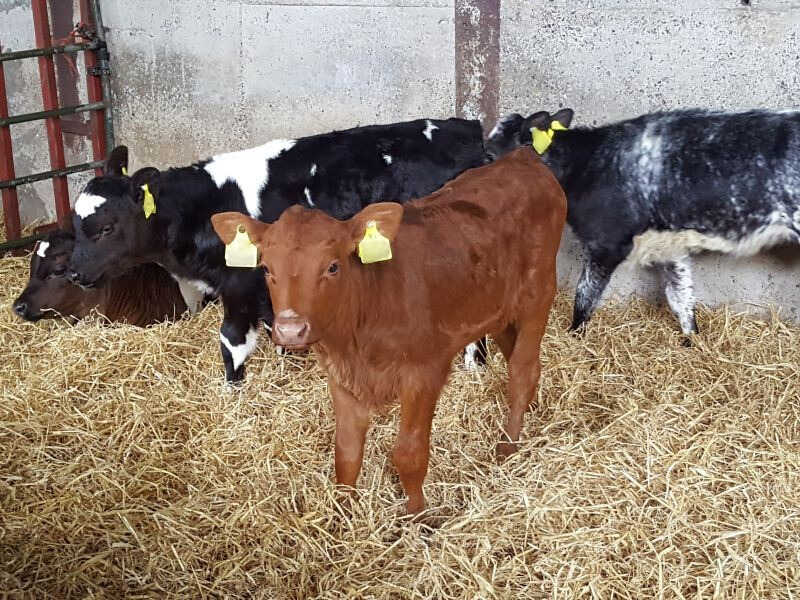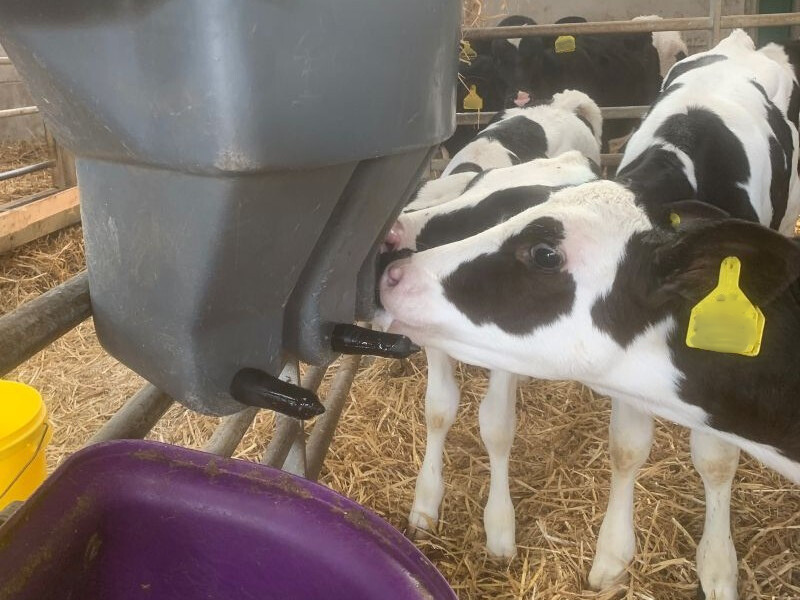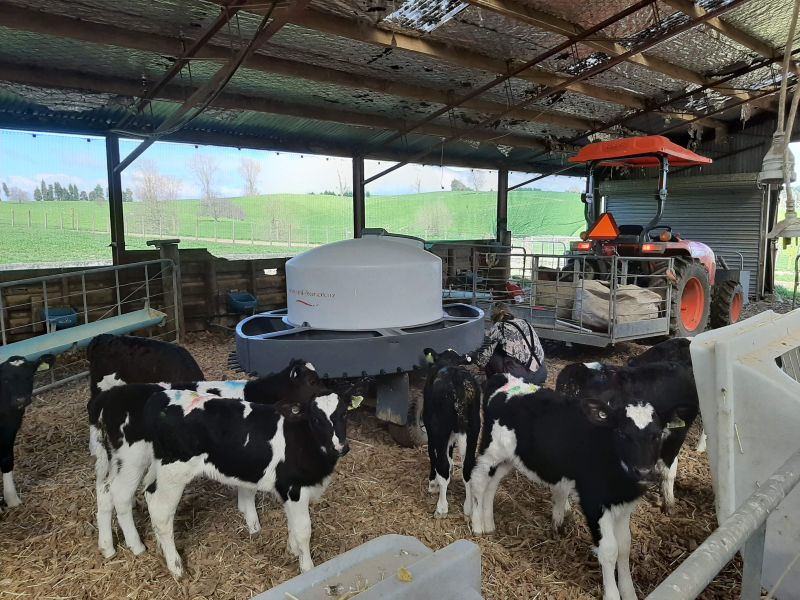Baby calves fed transition milk excel in their first lactation in both milk yield and quality
Heifer calves given a transition milk replacer during their first 10 days of life went on to produce 947 litres more milk in their first lactation compared with those fed a standard skim-based replacer, according to new research.
The Harper Adams University trial
A recent trial at Harper Adams University investigated the long-term effects of feeding Holstein Friesian heifer calves with a transition milk replacer.
- 36 calves were included in the trial, divided into two groups according to their birthweight and dam parity.
- All calves received four litres of pasteurised good quality colostrum at birth.
- In their first 10 days, one group was fed Transformula, a transition milk replacer manufactured by Bonanza Calf Nutrition, and the other a skim-based calf milk replacer (CMR). This is shown in the feed plan in Table 1. All calves were also offered ad libitum calf starter pellet with chopped straw and water from birth.
| Days | Control | Transition |
|---|---|---|
| 0 | 4L colostrum | 4L colostrum |
| 1 – 10 | 5.2L CMR @ 15% solids (Shine, Bonanza Calf Nutrition, Ireland). | 5.2L transition milk replacer @ 15% solids (Transformula, Bonanza Calf Nutrition, Ireland). |
| 11 – 42 | 7.6L/day Shine CMR | 7.6L/day Shine CMR |
| 42 – 49 | Reduced to 5.2L/day Shine CMR | Reduced to 5.2L/day Shine CMR |
| 49 – 56 | Reduced to 2.6L Shine CMR once a day until weaning on day 56 | Reduced to 2.6L Shine CMR once a day until weaning on day 56 |
Both groups were followed through to their first lactation.
Results: higher yield and better milk quality
On average, heifers in the transition milk group produced 8,625 litres a head in that lactation (See Figure 1), at 617kg of milk solids (See Figure 2). This is compared to the standard CMR group who produced 7,678 litres a head at 532kg milk solids.
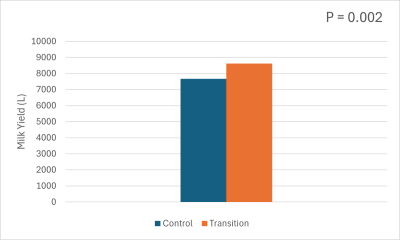
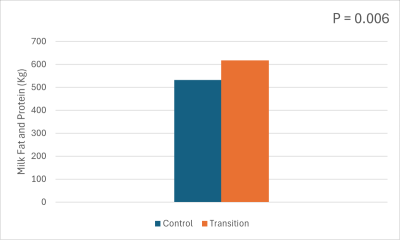
That equates to an additional 947 litres of milk and 85kg of butterfat and protein.
Dr Amanda Dunn, of Bonanza Calf Nutrition, calculates that at current prices, there was a 100:1 payback from feeding Transformula.
Growth and health during rearing
Interestingly, there were no significant differences in growth rates or health scores between the groups during the pre-weaning period and at weaning:
- Transition milk-fed calves grew at 0.63kg/day.
- Control calves grew at 0.61kg/day
“These findings indicate that although feeding transition milk for the first ten days of life did not impact the calves growth during the milk feeding period it did have a positive effect on their long term development in terms of milking performance as an adult cow,’’ says Dr Dunn.
Age at first calving
Heifers in both groups had a similar calving age, which was 26 months. That is much earlier than the UK average, which a 2018 study (Eastham et al., 2018) showed was 29.1 months. Forty per cent of heifers in that study were in fact 30 months or older at time of first calving.
Dr Dunn noted that an earlier calving age is linked to:
- Better reproductive performance
- Increased survivability
- Reduced somatic cell counts
“First lactation milk production tends to be much lower among younger heifers but lifetime daily milk yield significantly greater,’’ she says.
“Every dairy farmer should be aiming for a heifer’s milk yield to be approximately 80% of their second lactation yield which would leave the transition milk-fed heifers in this study producing well over 10,000 litres of milk in their second lactation.’’
Why transition milk matters
The bioactive components found in transition milk play a huge role in the development of the baby calf. They are exactly what nature intended to set up the foundation for health and development for future performance in the milking herd.
But not all farms can feed their own transition milk because of the risk of transmitting Johne’s or mycoplasma, or issues with storage. In situations where there is inadequate storage, large volumes of transition milk are often stored in buckets from one feed to the next. However, bacteria flourishes in that environment. As a result, calves are then fed a bacterial soup.
Pasteurisation is an option, but it is unknown as to whether it can undo poor hygiene practice. Pasteurisation may also have a negative effect on the beneficial bioactive ingredients found within fresh transition milk.
Some herds don’t produce enough either – often there are insufficient cows calved at a given time to supply the quantity of transition milk required to feed to calves for this length of time.
Dr Dunn says Transformula offers the perfect consistent alternative to a cow’s own transition milk.
